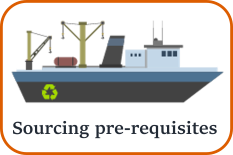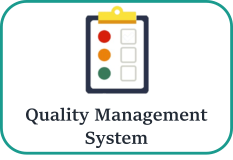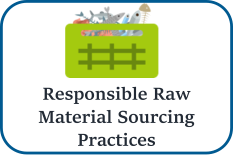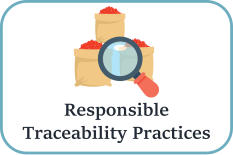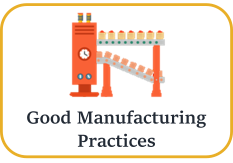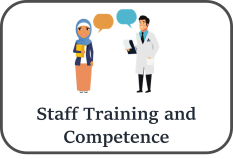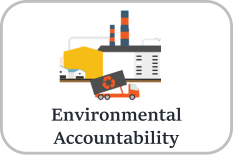Contents
V3 Standard Documents
In October 2023, the MarinTrust Governing Body Committee approved Version 3 MarinTrust Global Standard for Responsible Supply of Marine Ingredients. The revised Standard was issued on 23 October 2023 and will become effective on 1 May 2024.
The approval of Version 3 comes at the end of a rigorous development process, including pilot assessments across the world and feedback from auditors, certified companies, and other key marine ingredient stakeholders to enhance the consistency and efficiency of audits.
From 1 May 2024, any new applicants to the MarinTrust Programme must apply for audits against Version 3. A transition period of 1 year will allow certificate holders to prepare for audits against the new Standard. By 1 May 2025, it is expected that all companies will be certified against Version 3.
Please contact the MarinTrust team at [email protected] should you have any questions.
Summary of main sections
Explore the main sections of the draft Version 3 Standard. Simply click on the icons to open and click again to close.
Includes the requirements for raw materials including whole fish and by-products. As a pre-requisite these raw materials must be assessed, and assurance in place regarding the legality of sourcing.
Improvements / Developments:
- Defined as pre-requisite and simplified and more focused
- Builds on the FAO's Code of Conduct for Responsible Fisheries
- Directly links back to the revised MarinTrust raw material assessment requirements
- Detailed sourcing requirements moved to other sections
Covers the wide scope of the facility quality management system, including policies, procedures and other requirements.
Improvements / Developments:
- Consolidated policies into one clause
- Introduced provision of performance metrics each year (completion of a template)
- Emphasis on due diligence
- Strengthened checks of suppliers and subcontractors as a foundation of due diligence; traceability, legal, social etc.
- Improved clarity around the use of logo and Improver Programme claim
Details the specific information and requirements to ensure the raw materials which are sourced, can be verified as to their origin, including fishery, supplier, farm. Includes the key information required for each type of raw material.
Improvements / Developments:
- Introduced applicable Key Data Elements (KDEs) from the Global Dialogue on Seafood Traceability (GDST) for whole fish and by-products
- Clarified types of by-products and sources
- Strengthened the traceability requirements relevant to the raw materials
Details the specifics for traceability of MarinTrust compliant raw materials, including requirements for segregation from non-approved sources. How MarinTrust compliant raw materials should be able to be traced through the production process, from source to sale to customer. Requirement for mass balance to verify input and outputs.
Improvements / Developments:
- Aligned to Chain of Custody with linkage between standards
- Key Data Elements (KDEs) from the Global Dialogue on Seafood Traceability (GDST)
- Builds on the raw material requirements in Section 3 to specify traceability requirements for each batch / delivery of raw materials
- Includes Mass Balance for all raw materials and marine ingredients
- Traceability requirements from start to end have been strengthened
Focuses on the key requirements for a facility to ensure good manufacturing practices are in place, across all the key areas of the facility.
Covers numerous specific requirements including hazard analysis, risk management, and operational details.
Improvements / Developments:
- Section has been streamlined and is clearer and more logical
- Any specific standards or schemes must be aligned with MarinTrust recognition procedure (in development).
- All GMP requirements are now in this section
- Strengthened to align with latest good practice
- Latest versions of Codex Alimentarius - General principles of Food Hygiene (2020), ISO 22000 (2018), GMP+ (2022), FEMAS (2019).
- Follows normal HACCP requirements and terminology
New requirements for TACCP / VACCP (only for plants producing for human consumption) improves product integrity, reduces the probabilities of adulteration and fraud.
Ensures that staff have the required skills to understand and deliver across all areas of the MarinTrust standard.
Improvements / Developments:
- Staff training is clearer and ensures any personnel working in areas related to the Standard are aware
- Helps to improve knowledge of MarinTrust
- There is flexibility for plants to implement their own ways of keeping records and providing training
- Evidence is essential
Ensures effective staff safety, welfare and working conditions.
Improvements / Developments:
Social accountability has been brought up to date and in line with International Labour Organization (ILO) / latest practice. Balanced with what is already required in law with key performance indicators on social performance.
Broader scope of social accountability with new requirements for:
- Staff welfare
- Fair employment from recruitment through to employment conditions
- Zero tolerance of illegal work e.g. modern slavery, forced labour, child labour
At the Factory:
- Further strengthening the requirements around worker welfare, rights, freedom of association, health and safety, and working conditions.
On the vessel:
- New social criteria controls for vessels supplying whole fish to marine ingredients producers will focus on employment, pay, and health and safety.
Ensures effective environmental management and that the facility is in line with permits and managing environmental performance.
Improvements / Developments:
Environmental accountability has been streamlined but remains largely the same, with key performance indicators on environmental performance
Criteria for raw material sourcing
 The pre-requisite for an audit, an factory must demonstrate responsible sourcing, through sourcing raw material (whole fish and by-product) that is MarinTrust approved, which means it has passed an assessment undertaken by a third-party Certification Body. For MarinTrust approved whole fish and by-products, MarinTrust sets the criteria to assess these raw materials.
The pre-requisite for an audit, an factory must demonstrate responsible sourcing, through sourcing raw material (whole fish and by-product) that is MarinTrust approved, which means it has passed an assessment undertaken by a third-party Certification Body. For MarinTrust approved whole fish and by-products, MarinTrust sets the criteria to assess these raw materials.
Alongside the development of Version 3, MarinTrust has revised by-product and whole fish fishery assessment criteria.
Summary of changes for raw material assessments
By-product assessment:
The focus of the assessment has changed. V3 now focuses on the legality of the by-product sourced within the supply chain, this is done by using an IUU risk-based assessment of the source country (flag state). Retained checks to ensure the species is not endangered (CITES appendices & IUCN Red List for threatened species). The species categorisation and assessment criteria for whole fish (Categories A, B, C and D) remain unchanged.
For whole fish fishery assessment:
The key requirements remain the same as the current version. The Management and Ecosystem Impacts criteria have been improved by restructuring the clauses and introducing sub-clauses. Sub-clauses come from information already used to assess the fishery and formalise the information previously situated in the assessment guidance.

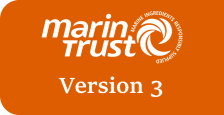 Version 3 of the MarinTrust Factory Standard increases accessibility for responsibly sourced and produced marine ingredients and encourages the use of by-products. Laying the foundations for fully traceable marine ingredients and progresses the Standard's focus on environmental and social impacts, both at the factory and on the vessels supplying whole fish.
Version 3 of the MarinTrust Factory Standard increases accessibility for responsibly sourced and produced marine ingredients and encourages the use of by-products. Laying the foundations for fully traceable marine ingredients and progresses the Standard's focus on environmental and social impacts, both at the factory and on the vessels supplying whole fish.